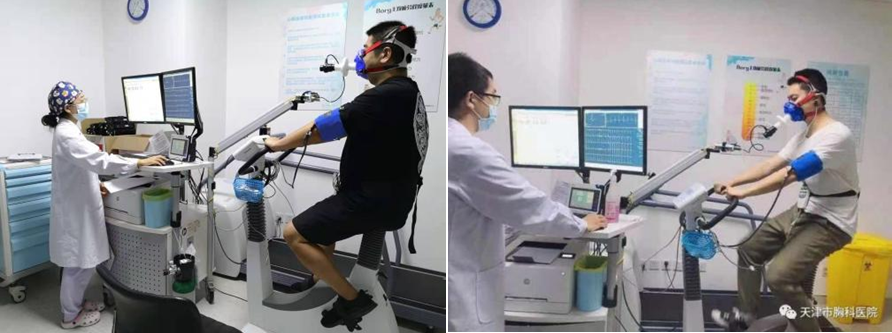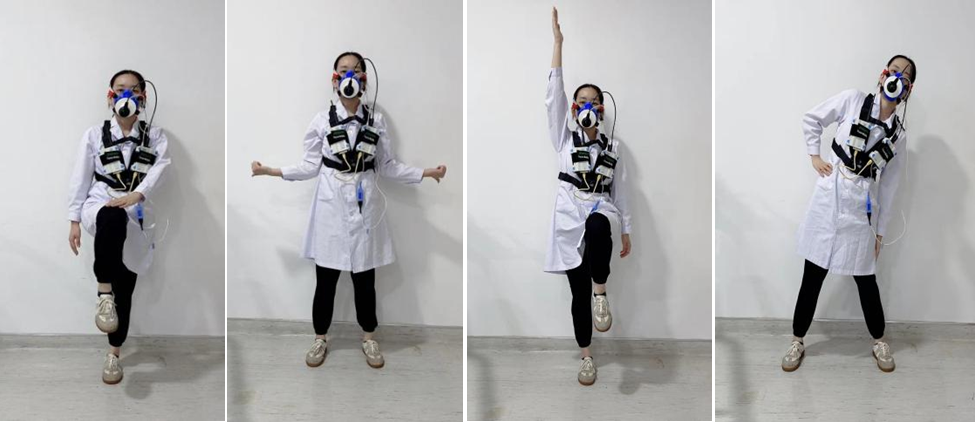|
Accurate rehabilitation assessment
1.Cardiopulmonary function test: Cardiopulmonary function test is a convenient, radiation-free, and non-invasive examination, which is internationally recognized as the "gold standard" for comprehensive evaluation of the functions of the heart, lungs, skeletal muscles, and other aspects of the human body in resting and active states.
This test is suitable for early diagnosis of cardiopulmonary diseases, evaluation of the severity of disease, especially risk assessment of critically ill patients before surgery (e.g. exercise cardiopulmonary function test before heart transplant), evaluation of treatment effectiveness, prognosis assessment of various diseases, daily life guidance and exercise prescription formulation, etc. It can also be used for health examination, such as those required of pilots in China once every six months to ensure public safety. Astronauts are also routinely administered such a test before a mission.
Cardiopulmonary exercise function test (CPET) is to evaluate the reserve function (actual load capacity) of the heart, lungs and skeletal muscles, and the body's actual tolerance of exercise by observing various responses (respiration, blood pressure, heart rate, electrocardiogram, gas metabolism, clinical symptoms and signs, etc.) of the subjects during exercise. The results are objective, reliable and reproducible, which has important guiding value for the diagnosis and treatment of cardiovascular diseases.

2. Portable exercise cardiopulmonary function test: applicable to accurate physical assessment of any individual in situ. It improves the test procedure and is conducive to patient's cooperation to obtain the best evaluation treatment effect; it can evaluate and record improvement to encourage patient confidence in treatment; it can evaluate patients who, for physical or psychological reasons, cannot undergo power cycling or treadmill testing; it can ensure occupational health: identify the causes of workload incapacity directly in the workplace; determine the degree of capacity failure in the actual working state; provide guidance on the safe completion of various exercises after recovery from cardiopulmonary injury and upon return to work; assess the heart and lungs: early detection of damage to the cardiopulmonary system; help identify the causes of training-related breathing difficulties or training limitations (e.g. heart, lungs); assess the patient's ability to function in daily life, work, or leisure activities (e.g., travel, sports) so that the patient can safely integrate into society.

3.Noninvasive dynamic hemodynamic monitor: Through a new generation of patented ventricle impedance blood flow waveform tracing, the monitor performs noninvasive, dynamic, real-time, continuous and accurate monitoring of more than 10 hemodynamic parameters, including stroke volume, cardiac output, myocardial contraction force index, preload rate, and peripheral vascular resistance, to assess cardiac function and guide treatment. The device has five major functions: hemodynamic impedance diagram; hemodynamic resting histogram; hemodynamic balance diagram; hemodynamic motion bleed evaluation diagram; real-time trend change diagram of hemodynamics.
Clinic applications:
Resting assessment: resting cardiac function assessment, load cardiac function assessment guiding leg raise load test, accurate classification of hypertension, programmed optimization of pacemaker
Dynamic assessment: 6-minute walking test, simultaneous cardiac output test, dynamic change of cardiac function, exercise monitoring (aerobic exercises such as high-intensity interval training、resistance strength training、Tai Chi,etc.)

|